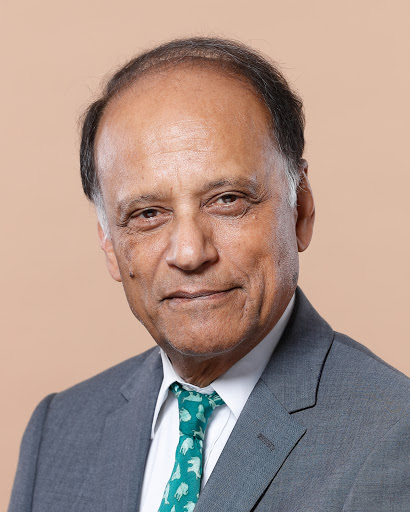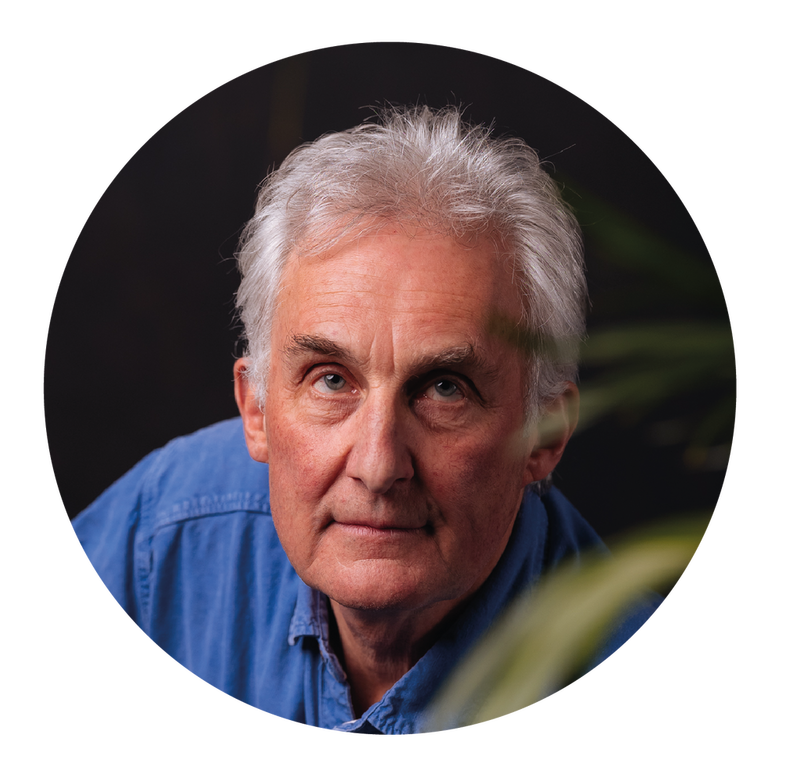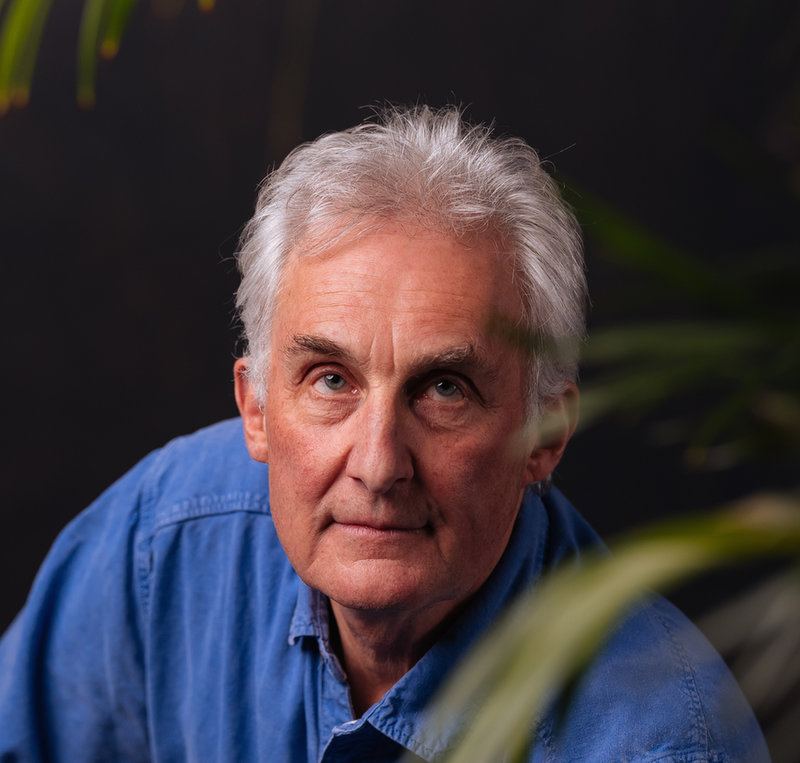Sustainability
Financed into Extinction: towards valuing nature in our global portfolio
In a landmark report from HM Treasury – The Economics of Biodiversity – Professor Dasgupta from Cambridge University makes a case for the inclusion of nature in our global portfolio of assets, whilst demanding an overhaul of our economic systems. Hannah Wright explores the implications of the report across the financial sector
P
eople stop paying attention to a problem when they believe there are no easy solutions. For several years, society has been aware of the increasing levels of man-made destruction to our natural environments.
Yet, as a wicked problem with no one perfect solution, individuals and institutions have been disengaged. That was, until the emergence of a disease, killing millions worldwide, made us pay attention.
Loss of biodiversity creates ample conditions for the emergence and spread of diseases, such as Covid-19. As articulated by Professor Sir Partha Dasgupta in The Economics of Biodiversity: “Biodiversity enables Nature to be productive, resilient, and adaptable.
“Just as diversity within a portfolio of assets reduces risk and uncertainty, diversity within nature’s assets increases its resilience to shocks. Reduce biodiversity, and nature and humanity suffer.”
The Dasgupta Review, released on 2 February 2021 by the UK HM Treasury, is a 600-page independent report on the Economics of Biodiversity, led by Professor Dasgupta from the University of Cambridge. After more than year of suffering, it is difficult to determine whether the review is impeccably timed or disastrously late.
The report calls for changes in how we think, act and measure economic progress in the hopes of protecting and enhancing our nature world.
Dasgupta continues: “We are all asset managers. Collectively, however, we have failed to manage our global portfolio of assets sustainably.
“Estimates show that between 1992 and 2014, produced capital per person doubled, and human capital per person increased by about 13% globally; but the stock of natural capital per person declined by nearly 40%.”
Whilst humanity has prospered at a devastating cost to Nature, with estimates of our total impact on Nature suggesting that we would require 1.6 Earths to maintain the world’s current living standards.
Consequently, Nature needs to enter economic and finance decision-making in the same way buildings, machines, roads, and skills do. Dasgupta writes: “To do so requires changing our measures of economic success.”

Professor Sir Partha Dasgupta
Emeritus Professor, Frank Ramsey Professor Emeritus of Economics
Grossly Damaging Product
Our primary measure of economic success – GDP - is valuable for short-run macroeconomic analysis and management. It does not, however, account for the depreciation of assets, including the natural environment. Consequently, it encourages us to pursue unsustainable economic growth and development.
The model is outdated, Piyush Gupta, CEO at DBS believes: “As Dasgupta rightly points out, our economic models for development focus on produced capital. Even the most fundamental measure - GDP - is a measure of output, of goods and services.
“These models were suitable for a time, for example the era of the great depression and WW2, when reconstruction was critical, and natural resources seen as relatively abundant. Unfortunately, this is no longer the case. It is now quite clear that mankind is currently living outside our planetary boundaries and therefore, as with any constrained resource, we need to put a price on natural capital.”
Biodiversity is declining faster than at any time in human history. A concerning proxy, current extinction rates are around 100 to 1,000 times higher than the baseline rate, and they are increasing.
“Preserving biodiversity is all about the money” says Andrew Mitchell, founder and senior advisor to Global Canopy, one of the four partner organisations that helped to establish the Task Force for Nature-related Financial Disclosures (TNFD).
Speaking to PBI, Mitchell continues: “Unless we change the movement of money, we will continue to finance ourselves into extinction. At the heart of all this is a problem of economics; the way we measure value.
“There is a battle of values and valuations. The people that have money, and want to invest it, are mostly concerned with whether their financial capital is increasing. They don’t consider social capital, human capital, or natural capital.
“However, across the last decade, there has been growing awareness of the need to get financial capital back into a better state of equilibrium with natural capital. Unless we do that, we’re stuffed.
“The review sets out a new way in which governments can measure their economic health and the way business, or you and I, can. Most crucially, it highlights the way the financial sector must evolve. People rarely ask what is happening to their money in their pension, but what is the point in a pension fund if, when I receive it, I cannot breathe the air.”
Notably, the review proposes Inclusive Wealth as a suitable alternative to GDP. This approach accounts for the benefits from investing in natural assets and illuminates the trade-offs between investments in different assets, including natural assets.
This is no minor undertaking, “we already know how to do it” says Chris Kaminker, head of Sustainable Investment Research & Strategy at Lombard Odier.
Kaminker continues: “Stiglitz, Sen & Fitoussi gave us the blueprint to measure inclusive wealth, around 5 to 10 years ago. Some of the best economists we have, have given us a blueprint for how to deal with this situation.”


Andrew Mitchell
Senior Advisor
Ecosphere+
Valuing the invaluable
Nature’s worth to society – the true value of the goods and services it provides – is not reflected in market prices because it often bares no monetary charge. Implementing a system of Inclusive Wealth requires the valuation of nature’s assets.
Gupta adds: “Unfortunately, finding the right price is easier said than done. Nature’s processes are silent and invisible and therefore subject to the tragedy of the commons.”
Indeed, many of our actions on nature are hard to trace and go unaccounted for. Mitchell continues: “In nature we don’t have a currency like a tonne of carbon. We don’t have a target of 1.5 degrees”.
Speaking to PBI, Sandra Carlisle, head of responsible investments at HSBC Global Asset Management, agrees: “Pricing externalities is hard. There is no global market, so how do you price nature? We know it is invaluable, but due to the tragedy of the commons, it is assigned no market value. It needs protecting, and to do that, it must have a value.”
But putting a price on nature has proven controversial. Mitchell explains: “Some people believe that if it doesn’t have a price, then it’s worthless, whilst others will argue that it is priceless; nature should just be protected for its intrinsic value. But so far, the priceless argument has not saved nature, so we must do something differently.
“I believe we will end up with parallel prices. There will be financial capital prices, that are measurable in dollars, and then there will be proxies for other kinds of natural capital that will be measured in different ways, not necessarily priced in dollars.
“We’re not sure yet how to figure this out, but the current price we have on the balance sheet is zero, and anything we do has got to be better than that. When you look at the issue of climate change, we’re reaching COP26. It took 26 years of discussion and inaction. We must do better than that for nature.”
Sandra Carlisle
Head of Responsible Investment, UK
HSBC Global Asset Management
The Task Force for Nature-related Financial Disclosures
Explaining the role of the TNFD in establishing a framework for reporting on Nature, Mitchell said: “The Task Force for Climate-related Financial Disclosures was started by Michael Bloomberg and Mark Carney in 2015. Two things then happened.
“Governments began to agree to act on climate change and a framework was launched to tell institutions how to deal with the problem. Suddenly, there was a mandate and a way of doing things. It had a galvanising effect in terms of raising awareness in the financial sector, and I want to do the same thing for nature.
“Since September, we have had 74 financial institutions, governments, regulators, and others, all in an informal working group. It’s an impressive body of experts undertaking a 2-3-year piece of work to design a reporting and disclosure framework for the financial sector.
“We must build it, test it, and release it for consultation, before improving it. Only then can we disseminate it to the world for use.”
Looking at the bigger picture, Mitchell continues: “The aim is to transfer more and more of our investments towards being nature positive. But how on earth do you measure that? In a climate context, that means being less engaged with fossil fuels, and moving more towards renewable energy.
“In nature, it could mean investing in agriculture that does not employ practices or supply chains that degrade ecosystems. The problem is, from the point of view from a pension fund, how can individuals measure that? People merely perceive themselves to be invested in a big multinational company, so it will require new kinds of information and new kinds of data.
“We’re talking about a complete revolution of the world economy. It’s a renaissance. It will make us all safer, and it will make certain people very rich. Others will lose money because they will hang on to those industries that are damaging the planet, without realising that the sunrise industries are coming. The pace of change will depend on the ability of governments to create the right incentives.
Mitchell concludes: “The metrics are coming. We are working on the metrics with the Informal Working Group as we speak and that is what the Taskforce will be here for – to try and establish these solutions.”
Transforming financial institutions
Difficulties notwithstanding, societies must set out a method of measuring these externalities to incorporate the value of nature into our models of economic growth. As allocators of capital, financial institutions will be at the forefront of this exercise.
The Dasgupta review is clear: “We need a financial system that channels financial investments – public and private – towards economic activities that enhance our stock of natural assets.”
One step ahead of the rest, HSBC Global Asset Management partnered with Pollination in 2020 to create the world’s largest dedicated natural capital asset management company.
The Climate Asset Management Joint Venture (CAM JV) intends to establish a series of natural capital funds, investing in a diverse range of activities that preserve, protect, and enhance nature over the long-term and address climate change.
Carlisle explains the details: “Across our whole client base, from institutional to HNW and retail clients, an increasing number were enquiring about investing in nature. No surprise really, given the pandemic has reinforced the impact that humanity is having on the world around us, and the interdependence that exists.”
“The intention is to create a series of nature-based solutions – funds and mandates. We plan to launch the first fund in the middle of this year. Then, we’re hoping for a second close by the end of this year and a series of other funds starting the year after.
“The focus of the first fund is natural capital, such as sustainable and regenerative agricultural practice, the management of timber woodland and forestry resources. That will be the core of the natural capital fund, but there is potential for further allocation to ocean-based solutions.”
We must not let the perfect be the enemy of the good
Sandra Carlisle of HSBC Global Asset Management
Explaining the three key challenges for the JV, Carlisle says: “Nobody has quite squared the circle of returns, scale, and impact yet. Overcoming the issue of scale, we will be raising up to $1bn. Concerning return, a lot of these funds require compromising on return, because the impact outcome takes priority. However, that won’t work for most investors.
“In terms of impact, all the standard ESG analysis, including the framework that we have developed within HSBC Asset Management, will apply to the fund. Every project that the team looks at will be assessed from several perspectives.
“Firstly, from a traditional risk returns point of view, does it meet the expectation for the underlying asset class. Then, we must be certain that it meets our HSBC AM ESG expectations for a particular asset class. Finally, we must look at it from an impact point of view - where is the additionality?”
Carlisle continues: “The impact measurement framework is very much a work in progress. Measuring improvement in biodiversity is incredibly granular and project site specific. The animals, insects, flora and fauna are all different depending on the site, so that is a challenge. There is no quick, technology-enabled solution.
“We will be referencing existing or emerging frameworks in the market, and we will almost certainly use partners – individuals that are local, with the right experience, for monitoring, recording and measuring any improvements in say, parameters such as soil erosion or water efficiency.
“We must not let the perfect be the enemy of the good. There is no point waiting around for the perfect solution as that moment will never arrive. You must start somewhere, and develop a framework you believe has integrity, whilst remaining accountable for the impact measurement against that framework.”
Referring to her experience of the first solar IPO in 2005, Carlisle says: “Back then, trying to do that was probably as hard as the task we are currently faced with. We had no idea what it was, how to allocate it or what the return should look like. Now in 2021, investing in solar is almost standard practice. We know we can get there; it just needs driving.
“So that’s how we plan to do it, and we would love to think it could become a reference document for the market. That way, we can avoid going down the same route as the ESG world, where we end up with 25 different frameworks, none of which map very well to each other.”
Carlisle concludes: “We don’t have the luxury of having a few goes and figuring it out. We need an ecological economy. Nature cannot wait, and Covid-19 has shown us why.”